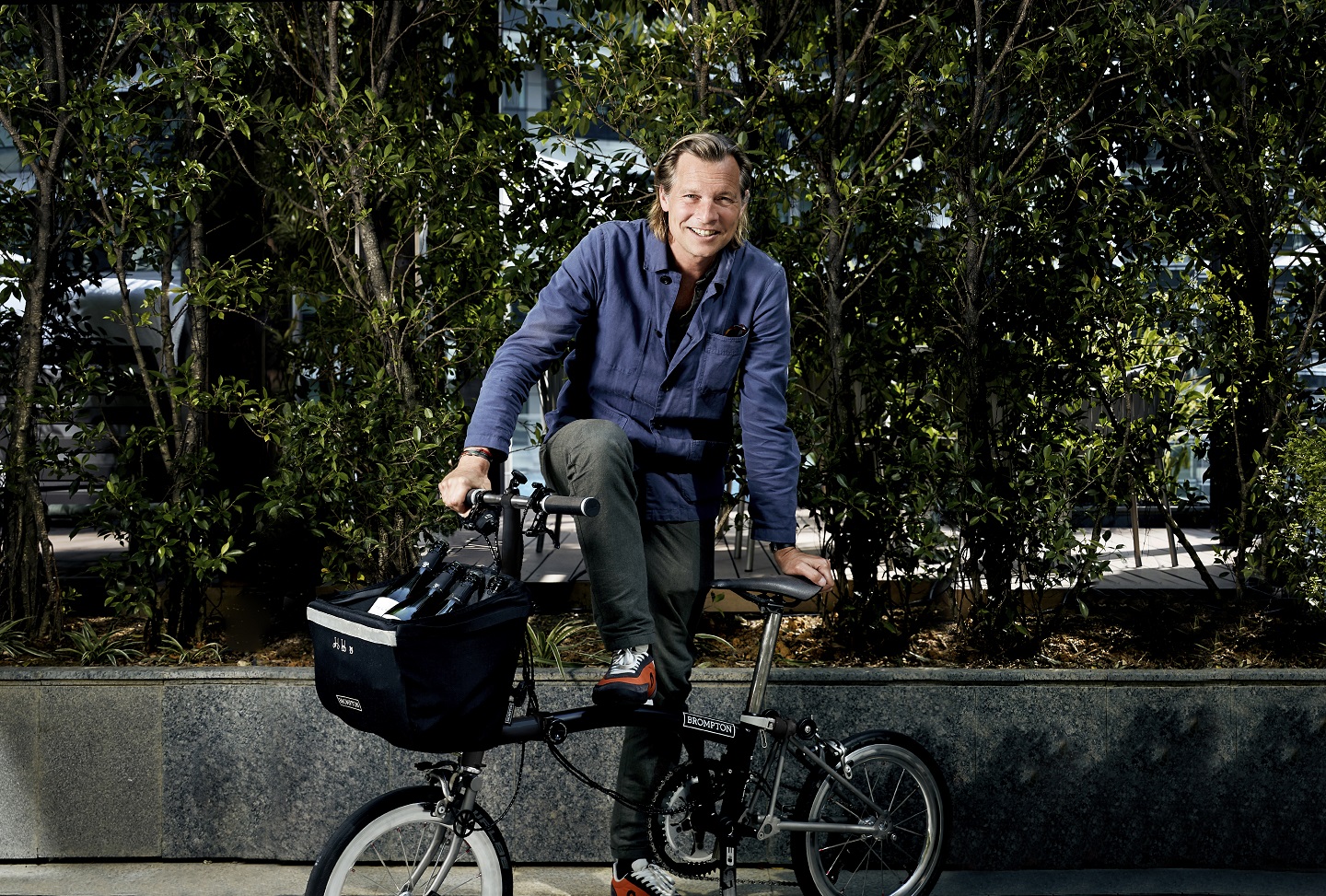
The president has decreed that air freight be done away with when transporting his champagnes (Photo: SooPhye)
The way a story is told makes all the difference. But imagine that it is also possible to influence how the story is written. Ludovic du Plessis believes in the power and importance of both. At just 49, the energetic and visionary president of Champagne Telmont has been a recognisable name in the world of fine wines and spirits for some time already.
Prior to joining the Damery-based maison in France, nestled on the right bank of the Marne Valley, Du Plessis had spent a decade working with Dom Pérignon and Moët et Chandon and was most recently global executive director of Louis XIII. It was during his time there that he catapulted the premium cognac brand into the global consciousness by way of a series of groundbreaking initiatives, chief of which was the “100 Years” campaign that included a movie starring John Malkovich and a special recording by Pharrell Williams specifically addressed at climate change. In an unheard-of move, both film and song will only be revealed to the public about a century from now. The latter, a single original copy titled The Song We’ll Only Hear If We Care, engraved on a unique clay vinyl, was quickly locked away in a permeable safe where it will remain undisturbed until 2117 — or be destroyed forever should global warming and sea levels continue to rise unabated.
The grandfather
Born on Nov 26, 1974, “in a small clinic near the Eiffel Tower” and the third in a family of four boys, Du Plessis credits his work ethic entirely to his father, a former IBM senior executive who sadly passed away in 2016. “I was on my way to Beijing when I learnt I had lost him,” he says. “It was a tough moment, not being able to say goodbye. Happily, my mother, 75, is still around and we joke by calling her Saint Marie as she is forever smiling, never complains and is always there to help. While my father taught me the value of hard work and the importance of family, it was my mother who taught me how to be nice … or at least, try to be nice to others,” he laughs.
Energetic and exuberant by nature, Du Plessis is well known in the industry for his friendly, easy-going manner and hands-on brand of leadership. And although he spends much of his time criss-crossing the globe promoting Telmont, he shares charming family anecdotes as effortlessly as he does his vision and plans for the industry. Take the story of how he met his wife Philippine while they were students at the Sorbonne. “It was the first day of class and, of course, I was late. I soon spotted this beautiful lady with eyes like blue diamonds and I pushed my way past everyone just to sit next to her. Now, our children — Paloma, Grégoire and Prune — are 20, 18 and 15,” he grins.
telmont_champagnes_6.jpg
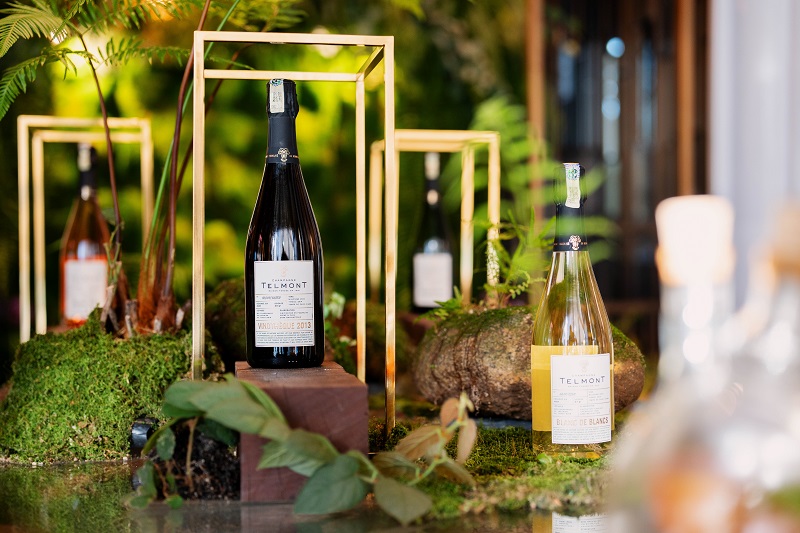
Du Plessis originally harboured ambitions to become a singer. It was his paternal grandfather Pierre, the Marquis du Plessis de Grenédan, who introduced young Ludovic to the finer things in life. “My grandfather, a lawyer and adventurer, bought a wooden boat one day, christened it Holly and sailed around the world — not once, but twice! It was during the second voyage that he decided to land on St Martin,” he shares. “It was the early 1960s and a long time ago. St Martin, which is very close to St Barts in the Caribbean, had no cars or a nice place to dine then. So, he impulsively decided to stay and set up a restaurant called Le Mini-Club.”
History remembers Le Mini-Club, set on the Marigot seafront, as a gastronomic haven, attracting visiting sailors on shore leave as well as the vicinity’s great and good, including holidaying members of the Kennedy clan and acclaimed artist Jasper Johns, who always spent winters at his Philip Johnson-designed home in Terres Basses. The restaurant was built on stilts and surrounded by swaying coconut trees. It was the Marquis’ second wife Claude who was instrumental in Le Mini-Club’s culinary reputation, with her Thursday evening buffets — starring delights like lobster, soufflé and conch fricassee — said to be the stuff of legend.
“I first visited St Martin when I was seven and then every summer after that,” Du Plessis smiles. “With Claude, everything was always gastronomic. I remember going around — when I was older, of course — to taste the unfinished bottles of wine. It was my grandfather who taught me about wine and champagne, all the things he loved very much.” After the Marquis’ passing, Claude sold the business in 2010, mercifully a good few years before Hurricane Irma pounded the island, and returned to her native Switzerland where she still resides today in the little village of Saint-Luc.
1678544440589.jpg

The grapefather
Where there is good wine, sparkling or otherwise, it is also a certainty that fine cigars enter the equation somehow. “Of course I soon started to smoke some cigars and it became my first job,” Du Plessis continues. “We sold cigars from Cuba, Honduras and the Dominican Republic. And in 2000, I had the idea of doing a cigar and champagne pairing but my top customers told me, ‘Ludo, Cuban cigars and champagnes won’t work’. Nevertheless, I still wanted to go ahead as I knew of this cigar called Fundadores, which was very ethereal. I told my customer, ‘Hold on, my friend. You will see.’” A quick call was then placed to the Marquis. “I asked my grandfather what the best champagne was, to which he replied, ‘Dom Pérignon, of course’. Ah, bon. So, I called the maison in Epernay and explained what I was doing. They listened, said okay and sent me six bottles!”
It was only a matter of time before Du Plessis would cross paths with Richard Geoffroy, then chef de cave at Dom Pérignon and a veritable legend in the world of champagne. “I call him The Grapefather … the pope of champagne. When I first heard him speak about champagne, I fell in love … with his charisma and passion and expression for champagne. The guy is an artist and I immediately said to Richard, ‘I want to work with you’. He thought it was a joke, but three months later, there I was — product manager for Dom Pérignon. And that started an unforgettable 10 years of working together, of creative exchange and of friendship.”
Du Plessis spent a solid decade working for Dom Pérignon and Moët et Chandon, followed by seven years at Louis XIII as its global executive director. “It was while working for Louis XIII that the seed of sustainability grew in my mind. And I remember it was in 2019 that I asked myself: What do I want to do with my life? It is a question I ask myself every seven years or so.”
What Du Plessis doesn’t really say is that the person who planted the seed of sustainability was none other than Leonardo DiCaprio, whom he counts as a dear friend and who emerged recently as an investor in Champagne Telmont. As famous for his acting prowess as his dedication to the planet, the Hollywood star is known for his commitment to the preservation of the planet, having founded a non-profit at 24 to earnestly support organisations that battle climate change, protect wildlife and preserve threatened ecosystems.
telmont_leonardo_dicaprio.jpg
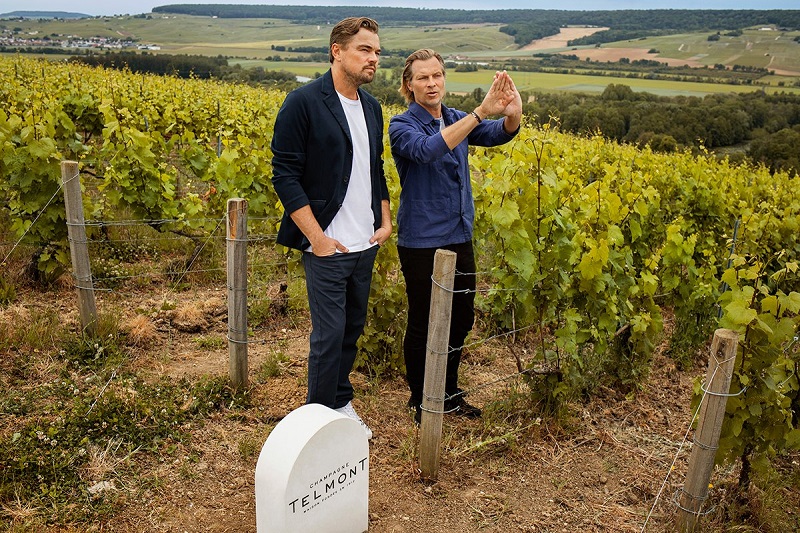
The godfather
With regards to his latest seven-year plan, Du Plessis explains how he put an outline on paper, detailing how he wanted to focus on champagne entrepreneurship and how it had to be a business for good — in short, a fine product that respects the concept of terroir while having sustainability at its core. With his signature exuberance, he promptly jumped on his foldable Brompton bicycle (he has five, including an electric one) and rode to the Gare de l’Est that very weekend, where he caught the first train to Champagne in search of a maison to buy.
Having created a mental checklist, Du Plessis was adamant the champagne house had to tick four key boxes. “First, it had to have history. Second, it had to be a family business where a descendant of the original family is still involved with its production. Third, it had to be amazing champagne, where a single sip is able to make me dream. And lastly, and most difficult of all, it had to be moving towards fully organic status.”
Identifying the house of Telmont in 2019 after reviewing no fewer than 24 other potentials, he made his proposal to the Rémy Cointreau group as both shared the same values of an innate and immense respect for nature, talent and time. The idea was met favourably, with Rémy Cointreau acquiring the majority stake as at October 2020. Du Plessis himself is a shareholder, together with his friend, believer and supporter DiCaprio.
Headquartered in Damery, a village near Epernay, Telmont’s history dates back 111 years, when it was founded by Henri Lhôpital after the infamous Champagne Riots of 1911 — a short but turbulent period that was the result of a perfect storm of factors: late frosts, hailstorms, flooding, the arrival of the destructive Phylloxera louse that destroyed thousands of acres of vineyards and a rumour that had been swirling around on how certain champagne makers were not supporting the local industry by pulling in grapes grown from outside the region. The ugliness finally abated after World War I and once a new law had been put in place to protect the provenance of méthode traditionnelle champagne.
Today, fourth-generation Bertrand Lhôpital continues in his ancestors’ footsteps as Telmont’s cellar master and head of viticulture while working hand in hand with Du Plessis and the Rémy Cointreau group to continue making world-class champagne and transition further towards full organic status. “Telmont’s style is defined by its tension and freshness. It is structured yet ethereal … a ballet in the mouth. I credit Bertrand for continuing the heritage his great-grandfather started and because of this, I nicknamed him The Godfather,” Du Plessis jokes.
It now falls on him and his team to develop the brand globally without sacrificing a whit of Telmont’s famous dedication to master craftsmanship and organic agriculture — a Herculean effort considering only 4% of champagne vineyards are certified organic.
telmont_champagnes_2_1.jpg
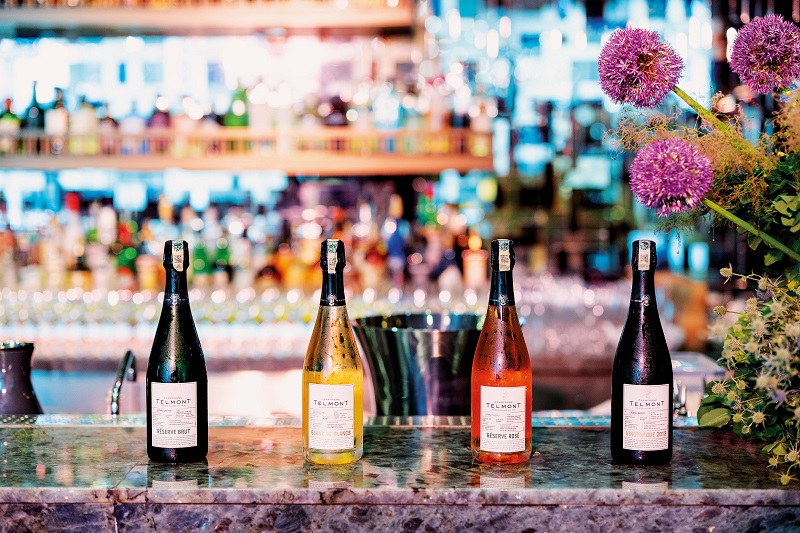
Out of the box
Part of Du Plessis’ great vision is called In Nomine Terrae, Latin for “In The Name of Mother Nature”. An ambitious certification of the Telmont estate is underway to convert it into a 100% organic champagne house in the very near future. “Today, we already have 95% of our estate organic but we also must achieve the same for our partner growers, one by one. We are making that happen by sharing technical know-how as well as helping them financially to truly move to organic agriculture.”
A radical new approach has also been implemented whereby there is zero packaging or gift boxes for all Telmont products, despite champagne being a luxury beverage. “Don’t just reduce the carbon footprint of your packaging. Kill it completely,” Du Plessis asserts. “Why bother with an ecological or environmentally friendly gift box? Please ... Let’s just make that point clear, boldly and loudly: You don’t need a big, bulky gift box for champagne.”
Determined to reduce the maison’s environmental footprint at every stage, props must also be given to Telmont’s innovative bottles — an industry first. It has stopped using transparent bottles — which are not made with recycled glass — and only use green glass bottles, which are produced using 87% recycled glass. Another significant reduction in total carbon emissions stems from a new formula for Telmont’s bottles itself, which weigh 800g each — 35g lighter than the industry standard. “This is extremely complex and technical but our glassmaker has succeeded in creating a lighter bottle that can withstand the very high pressure of gas produced during fermentation,” Du Plessis explains. “It’s twice the pressure inside a car’s tyres! We experimented with the new bottle for a year and it worked. So now, we have produced 30,000 of these lighter ones and will aim for 100,000 next year. Bottles account for 24% of a champagne house’s carbon footprint. So, imagine [the impact] if every champagne bottle in the world weighed 35g less!” Fans of bespoke or cuvée champagne bottles will also have to get used to standard bottles seulement. “They are very aesthetic and beautiful but use more glass and are heavier so wfft,” he whistles while making a slicing gesture with his hand.
Taking to heart the adage of how “good things come to those who wait”, the president has decreed that air freight be done away with when transporting his champagnes. “Telmont travels by ship. It’s more complicated logistically but it is manageable. When you see the impact of carbon emissions, you won’t mind waiting a bit longer,” he grins. He also puts paid to the assumption that going green or doing away with packaging would negatively impact sales. Au contraire. “I started this two years ago, so I already have a track record. I can honestly tell you, my sales keep growing big time. In fact, the response for good champagne without packaging is nothing but positive. But there also needs to be more education: for winegrowers, retailers and the next generation.”
ludo_cheering.jpg
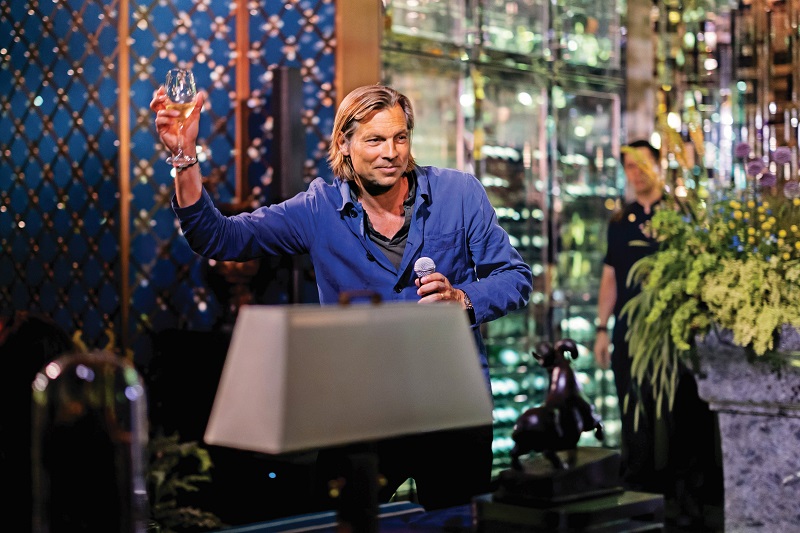
Of change + climate change
“I like to say my team and I at Telmont are climate optimists,” Du Plessis muses. “Everything we do is to fight climate change so that we can continue to make champagne in Champagne for the next 100 years at least. I am, to borrow from my Louis XIII days, thinking a century ahead. I don’t want to make a champagne that needs to adapt to the environment just because we don’t want or know how to protect the Earth. I have nothing against sparkling wines — there are amazing ones coming out of California and South Africa — but I am French, I love Champagne and I truly want to be optimistic about the future.”
What he says strikes a chord as climate change is already keenly felt in Europe’s vineyards. Summers of late have been particularly blistering, adversely affecting the grapes, so there has been a surge of interest from Champagne producers in buying vineyards in places like cooler Kent, England — understandable and logical due to the key factors of similar terroir and proximity to the Channel tunnel. Pommery and Duval-Leroy have been eyeing or already bought up estates while Taittinger is expected to launch its first English sparkling wines under the Domaine Evremond label as early as next year.
“All of us really must protect the planet because there is no Plan B or Planet B,” Du Plessis pleads. “We at Telmont have been very transparent with our knowledge and innovations. We share our results, we share what we know. Just take a look at our wine labels — the consumer is given all the information they need or want to know. We just need to remember this simple fact: if the Earth is beautiful and the soil good, ultimately, the wine that comes from it will definitely be good!”
This article first appeared on June 26, 2023 in The Edge Malaysia.


